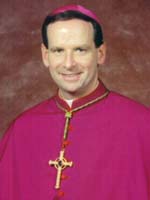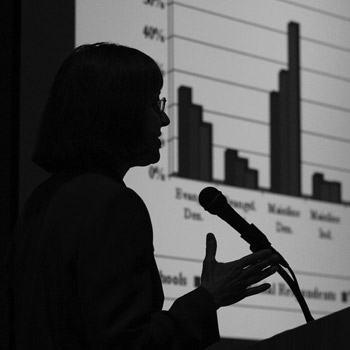Auburn Seminary’s Center for the Study of Theological Education is the only research institute in North America focusing specifically and comprehensively on theological education. Established in 1991, the center just published a new report, Signs of the Times: Present and Future Theological Faculty, by Auburn Seminary’s president Barbara G. Wheeler, Sharon L. Miller, and Franciscan Sister Katarina Schuth. The new publication presents a variety of useful (if not startling) information about theological faculties and graduate students who will soon be part of those faculties.
The Auburn Center has produced ten studies, but this is the first to revisit a previous topic a decade later. The center’s first reports on theological faculties (in 1993) exploded some myths, notably the one about teachers in theological schools being dry academics uninvolved in the life of the church. It is still true that most faculty members are involved in local congregations, but other realities have shifted over the last 10 years.
Signs of the Times offers some good news:
- Faculty members are involved in local congregations, with 75 percent participating “often.”
- Graduate students preparing to teach are more likely to lead and attend worship than they were 10 years ago.
- The average number of days that faculty serve religious organizations above the congregational level has also increased.
- Theology faculty members continue to be happier in their work than their peers in other fields of higher education.
- Doctoral programs are becoming more selective.
- Both doctoral students and faculty are more likely to say they would enter the same field if they had to do it again.
But some things have hardly changed over the last 10 years — or haven’t changed at all:
- Most faculty members still complain about an increasing work load, but the number reporting this is slightly smaller than 10 years ago.
- Although the number of women on theological faculties has grown over the last decade, the rate of increase is modest.
- There are a few more faculty members of color, but not many, with trends reflecting religious traditions.
- The younger half of the faculty is only slightly more diverse than the older half.
- Most faculty continue to use traditional teaching methods, and younger faculty are no more likely than older to use new technologies like computers and video in teaching.
But some things have changed:
- Prospective doctoral students apply to more programs and fewer are accepted by their first-choice programs.
- Newer faculty seem to have greater vocational clarity than did their predecessors. They are more likely to have decided on a teaching job in theological education before they finished their doctoral work, they are more likely to have been active in their job searches rather than waiting to be contacted or appointed, and they are more likely to have joined professional societies and made presentations.
- More than 90 percent of doctoral students in top supplier programs are open to teaching in a seminary.
- Faculty members are publishing more.
- Both faculty and doctoral students are 10 percent less likely than they were 10 years ago to be ordained. Some changes can be explained by more women teaching in schools of traditions that do not ordain women, but the rate of ordination has dropped more steeply for men than women. This trend will likely continue, since older faculty members are more likely to be ordained than younger members.
- 10 percent more doctoral students now describe their field as “religion” rather than “theology.” This is the change that most “alarmed” Auburn’s panel of advisors, a group of experts in theological education. “Theology is what binds together the segments of a theological school’s curriculum,” the report says. “If theology ceases to be the framework for the doctoral studies of prospective faculty, theological education will be adversely affected” (p. 19).
The study ends with a caveat about theological education’s internal variety, which makes it challenging to address together the issues raised. Perhaps it is best to start with your school’s own theological and denominational position. The study provides plenty of data for comparison. How do its findings relate to the experience of your school? What trends surprise you, soothe you, frighten you? A governing board, president and faculty belong in the same conversation if they hope to address the signs of the times at their own school.
Chart: Faculty by Race
Chart: Ordained Male Faculty



























